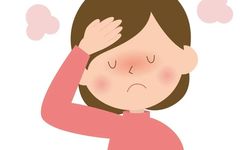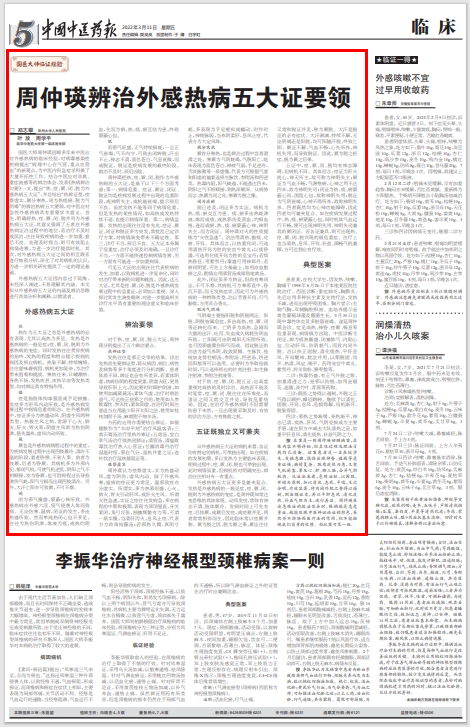
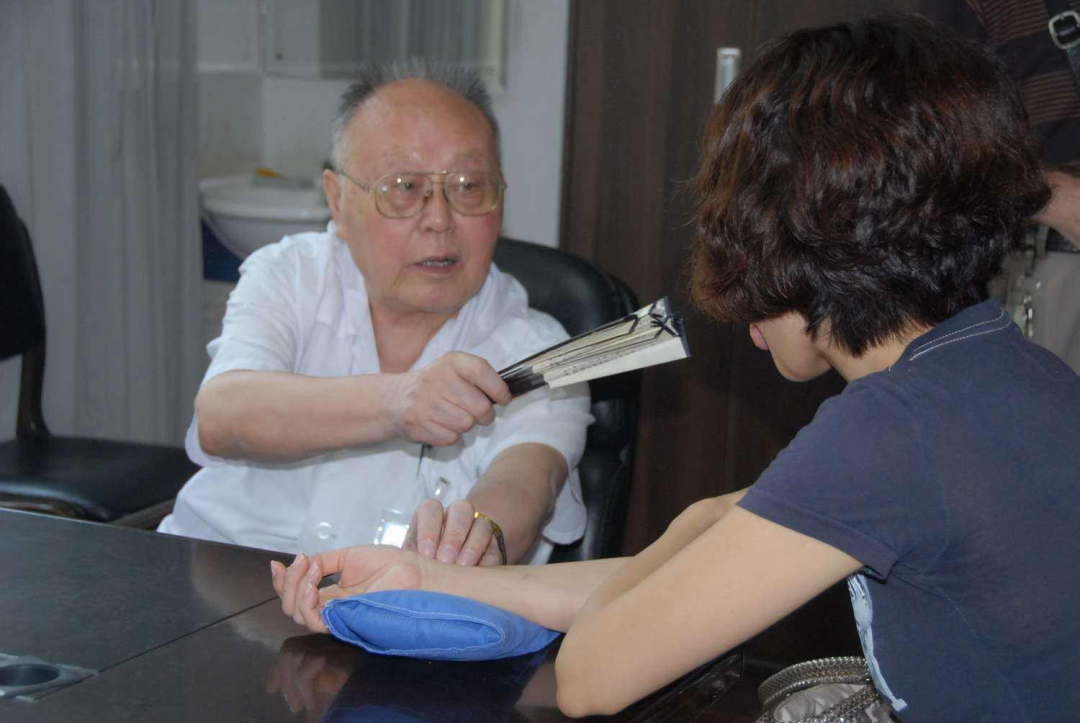 ▲Zhou Zhongying, Master of Traditional Chinese Medicine (1928-)Zhou Zhongying, the first Master of Traditional Chinese Medicine, is the chief physician at Jiangsu Provincial Hospital of Traditional Chinese Medicine.Zhou Zhongying reviews his clinical experience in dealing with externally contracted febrile diseases over the years and proposes a new viewpoint on viral infectious diseases: “The pathological center lies in Qi and Ying, with a focus on Ying and Blood,” contributing significantly to the field of emergency internal medicine in TCM. Combining his experiences in treating SARS and severe influenza, he published an article titled “Key Points for Differentiating and Treating Febrile Diseases,” proposing that “Heat, Spasm, Reversal, Closure, and Collapse are the five major syndromes of externally contracted febrile diseases,” and summarizing the five key points for treating febrile diseases: “Differentiating heat syndrome, observing spasm for deficiency or excess, classifying reversal as cold or heat, closure as heat phlegm stasis, and collapse as Qi and Yin exhaustion.” These insights hold significant academic value for TCM’s approach to acute externally contracted febrile diseases.Firstly, clearly categorizing heat, spasm, reversal, closure, and collapse as the five major syndromes emphasizes their roles in the treatment process of externally contracted febrile diseases. If treatment is delayed or mismanaged, it often leads to further deterioration of the disease and poor prognosis. Timely and appropriate management can effectively halt disease progression and provide opportunities for further treatment. Secondly, a detailed analysis of the interconnections between the five major syndromes deepens the understanding of their pathogenesis, providing a theoretical basis for further related research.The five major syndromes of externally contracted febrile diseases are too concise in content and not easily understood in their connotations. This article aims to analyze and explain the connotations and treatment strategies of the five major syndromes of externally contracted febrile diseases for the benefit of colleagues.Five Major Syndromes of Externally Contracted Febrile Diseases● HeatHeat, as the foremost of the five major syndromes, is an essential manifestation of externally contracted febrile diseases, particularly high fever. Fever is a common symptom of externally contracted febrile diseases; spasm, reversal, closure, and collapse are variations of externally contracted febrile diseases. Fever often persists throughout the course of the disease, and the degree and characteristics of the fever indicate the etiology and corresponding pathogenesis. Persistent and unresolved heat often signifies a more complex etiology and pathogenesis, posing challenges for treatment. Types of fever such as alternating cold and heat, afternoon tidal fever, persistent body heat, fever worsening at night, and night heat with morning coolness all have specific implications for differentiation.
▲Zhou Zhongying, Master of Traditional Chinese Medicine (1928-)Zhou Zhongying, the first Master of Traditional Chinese Medicine, is the chief physician at Jiangsu Provincial Hospital of Traditional Chinese Medicine.Zhou Zhongying reviews his clinical experience in dealing with externally contracted febrile diseases over the years and proposes a new viewpoint on viral infectious diseases: “The pathological center lies in Qi and Ying, with a focus on Ying and Blood,” contributing significantly to the field of emergency internal medicine in TCM. Combining his experiences in treating SARS and severe influenza, he published an article titled “Key Points for Differentiating and Treating Febrile Diseases,” proposing that “Heat, Spasm, Reversal, Closure, and Collapse are the five major syndromes of externally contracted febrile diseases,” and summarizing the five key points for treating febrile diseases: “Differentiating heat syndrome, observing spasm for deficiency or excess, classifying reversal as cold or heat, closure as heat phlegm stasis, and collapse as Qi and Yin exhaustion.” These insights hold significant academic value for TCM’s approach to acute externally contracted febrile diseases.Firstly, clearly categorizing heat, spasm, reversal, closure, and collapse as the five major syndromes emphasizes their roles in the treatment process of externally contracted febrile diseases. If treatment is delayed or mismanaged, it often leads to further deterioration of the disease and poor prognosis. Timely and appropriate management can effectively halt disease progression and provide opportunities for further treatment. Secondly, a detailed analysis of the interconnections between the five major syndromes deepens the understanding of their pathogenesis, providing a theoretical basis for further related research.The five major syndromes of externally contracted febrile diseases are too concise in content and not easily understood in their connotations. This article aims to analyze and explain the connotations and treatment strategies of the five major syndromes of externally contracted febrile diseases for the benefit of colleagues.Five Major Syndromes of Externally Contracted Febrile Diseases● HeatHeat, as the foremost of the five major syndromes, is an essential manifestation of externally contracted febrile diseases, particularly high fever. Fever is a common symptom of externally contracted febrile diseases; spasm, reversal, closure, and collapse are variations of externally contracted febrile diseases. Fever often persists throughout the course of the disease, and the degree and characteristics of the fever indicate the etiology and corresponding pathogenesis. Persistent and unresolved heat often signifies a more complex etiology and pathogenesis, posing challenges for treatment. Types of fever such as alternating cold and heat, afternoon tidal fever, persistent body heat, fever worsening at night, and night heat with morning coolness all have specific implications for differentiation.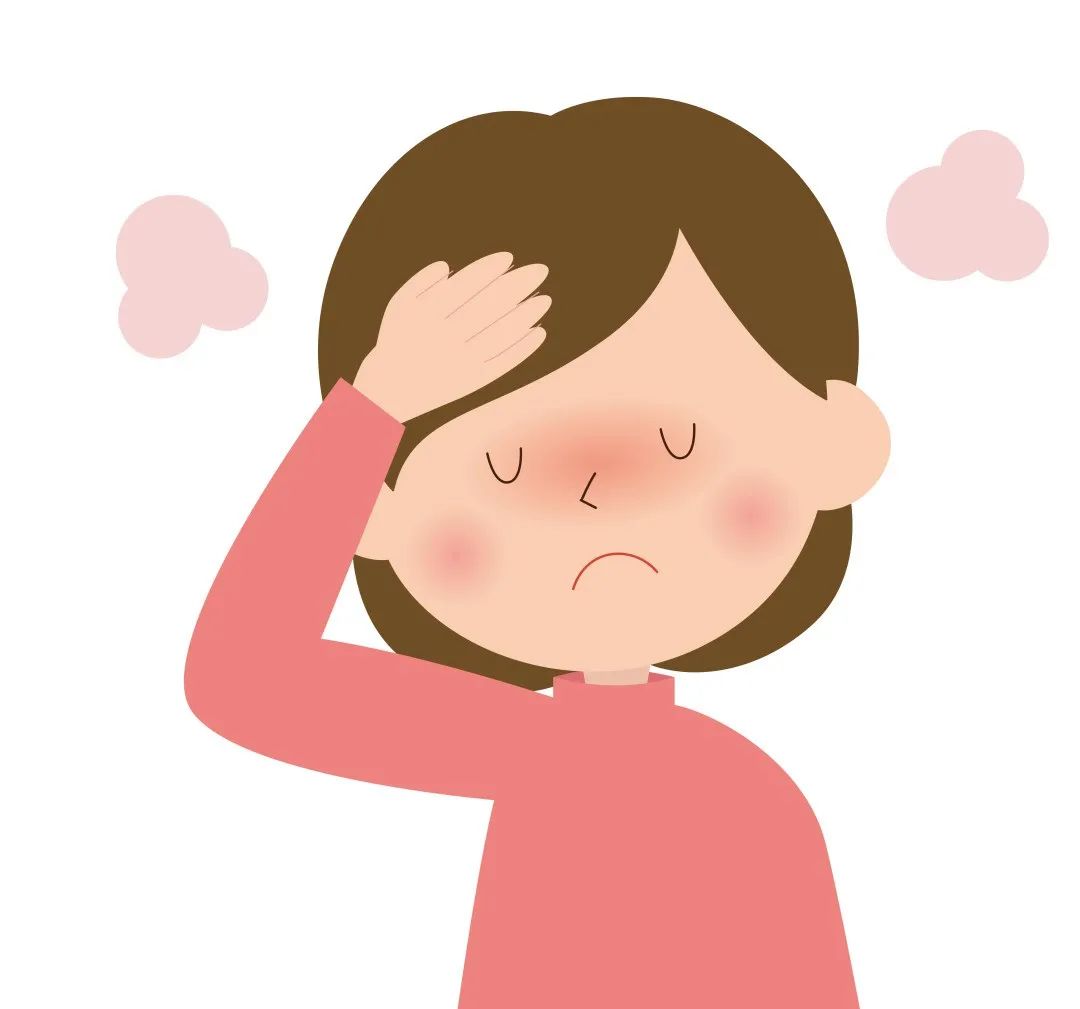 ● SpasmSpasm refers to the rigidity or convulsions of the limbs. The occurrence of spasms is often caused by internal wind from the liver and is a sign of critical illness during the progression of externally contracted febrile diseases. In externally contracted febrile diseases, spasm syndrome is generally divided into two types: heat excess causing wind and Yin deficiency generating wind. Heat extreme generates wind, often originating from heart fire, lung fire, liver fire, or stomach fire; Yin deficiency generating wind results from heat injuring Yin fluids, leading to a lack of nourishment for the tendons, causing internal wind to move.● ReversalReversal is also a severe condition during the course of externally contracted febrile diseases, characterized by coldness in the limbs and a stage of severe illness where the patient may become unconscious. The former is referred to as limb reversal, while the latter is termed syncope. The pathogenesis is often due to external pathogens invading internally, obstructing the flow of Qi, which can cause chaotic Qi dynamics, leading to syncope. Additionally, prolonged illness can result in fluid damage and Qi exhaustion, leading to coldness in the limbs. Furthermore, excessive sweating can also lead to reversal, which should not be overlooked.● ClosureClosure is caused by the obstruction of the heart spirit due to excessive pathogenic Qi. Externally contracted febrile diseases arise from the invasion of the six excesses and epidemic Qi into the body. Whether it is cold damage or warm disease, the occurrence of closure syndrome is often due to heat excess. However, pure heat closure of the heart is rare; it is often due to heat injuring Yin fluids, transforming into phlegm, or heat scorching Yin blood, leading to stasis, with heat, phlegm, and stasis intermingling, ultimately obscuring the heart.● CollapseIf pathogenic Qi is strong and the righteous Qi continues to be depleted, once the righteous Qi is exhausted and unable to contain itself, it can lead to a transition from closure to collapse, with continuous sweating, unclear consciousness, pale complexion, and weak breath, resulting in collapse syndrome. Collapse syndrome is the final stage of disease progression, and if not treated promptly, the prognosis is dire.
● SpasmSpasm refers to the rigidity or convulsions of the limbs. The occurrence of spasms is often caused by internal wind from the liver and is a sign of critical illness during the progression of externally contracted febrile diseases. In externally contracted febrile diseases, spasm syndrome is generally divided into two types: heat excess causing wind and Yin deficiency generating wind. Heat extreme generates wind, often originating from heart fire, lung fire, liver fire, or stomach fire; Yin deficiency generating wind results from heat injuring Yin fluids, leading to a lack of nourishment for the tendons, causing internal wind to move.● ReversalReversal is also a severe condition during the course of externally contracted febrile diseases, characterized by coldness in the limbs and a stage of severe illness where the patient may become unconscious. The former is referred to as limb reversal, while the latter is termed syncope. The pathogenesis is often due to external pathogens invading internally, obstructing the flow of Qi, which can cause chaotic Qi dynamics, leading to syncope. Additionally, prolonged illness can result in fluid damage and Qi exhaustion, leading to coldness in the limbs. Furthermore, excessive sweating can also lead to reversal, which should not be overlooked.● ClosureClosure is caused by the obstruction of the heart spirit due to excessive pathogenic Qi. Externally contracted febrile diseases arise from the invasion of the six excesses and epidemic Qi into the body. Whether it is cold damage or warm disease, the occurrence of closure syndrome is often due to heat excess. However, pure heat closure of the heart is rare; it is often due to heat injuring Yin fluids, transforming into phlegm, or heat scorching Yin blood, leading to stasis, with heat, phlegm, and stasis intermingling, ultimately obscuring the heart.● CollapseIf pathogenic Qi is strong and the righteous Qi continues to be depleted, once the righteous Qi is exhausted and unable to contain itself, it can lead to a transition from closure to collapse, with continuous sweating, unclear consciousness, pale complexion, and weak breath, resulting in collapse syndrome. Collapse syndrome is the final stage of disease progression, and if not treated promptly, the prognosis is dire.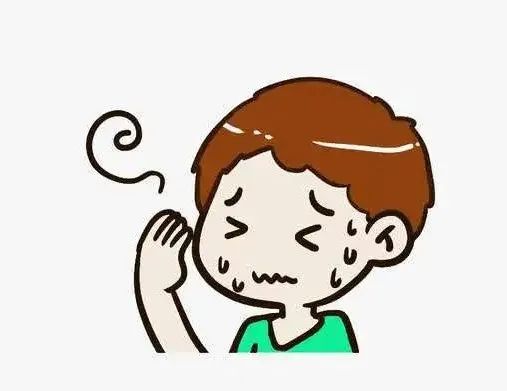 Zhou Zhongying categorizes heat, spasm, reversal, closure, and collapse as the five major syndromes of externally contracted febrile diseases based on three considerations: First, the severity of the condition. Spasm, reversal, closure, and collapse are all critical stages that occur during the progression of the disease, indicating poor prognosis. Although fever cannot be equated with critical illness, certain situations of fever, such as high fever or persistent fever, also indicate severe illness. Second, the rapidity of the condition. The onset of fever often occurs without warning, and spasm, reversal, closure, and collapse often arise suddenly, disrupting established treatment plans and introducing uncertainty into the disease’s evolution. Third, improper diagnosis and treatment lead to poor prognosis. The five major syndromes themselves belong to critical conditions, and treatment must be timely and accurate; otherwise, it may not only fail to control the disease’s progression quickly but may also exacerbate the condition.It is evident that the emergence of the five major syndromes often represents the occurrence and exacerbation of the disease, complicating the pathogenesis and presenting new problems and challenges for treatment. Therefore, these five major syndromes, especially spasm, reversal, closure, and collapse, are urgent conditions in the progression of externally contracted febrile diseases that must be given due attention. A thorough exploration of their occurrence and evolution patterns holds significant theoretical and clinical value for improving related diagnostic and treatment levels.Key Points for Differentiation and TreatmentFor the five major syndromes of heat, spasm, reversal, closure, and collapse, Zhou Zhongying proposed five key points for differentiation and treatment.● Differentiating Heat SyndromeFever is often the result of the conflict between pathogenic and righteous Qi. The first step in diagnosing and treating fever is to differentiate the syndrome type, analyzing and judging from multiple angles such as etiology, location, nature, and severity of the disease. Patients with different constitutions will have different differentiations; for those with a Yin deficiency constitution, the degree of heat damage to Yin is more severe, and excessive Yin deficiency can easily lead to liver Yang hyperactivity. Therefore, it is essential to protect Yin fluids at all times, such as using modified Wei Rui Decoction; for those with a Qi deficiency constitution, slightly assisting Qi during treatment can achieve the goal of supporting the righteous Qi and expelling pathogens, using formulas like Ren Shen Bai Du Decoction or Shen Su Decoction; for those with a Yang deficiency constitution, attention should be paid to appropriately applying warming methods to open the lesser Yang and greater Yang, using formulas like Gui Zhi Jia Fu Zi Decoction or Ma Huang Fu Zi Xi Xin Decoction.The application of herbal formulas also needs to be combined with differentiation. For example, Yin Qiao San is used as a “spicy-cool formula” to treat wind-heat attacking the exterior; San Huang Shi Gao Tang treats interior heat with exterior cold syndrome; Wu Hu Tang and Xuan Bai Cheng Qi Tang treat phlegm-heat obstructing the lungs; Qing Ying Tang and Qing Wen Bai Du Decoction treat heat entering the heart and Ying; Gan Lu Xiao Du Dan treats damp-heat epidemic diseases with both Qi and damp-heat; Lian Pi Yin treats damp-heat obstructing syndrome, etc.
Zhou Zhongying categorizes heat, spasm, reversal, closure, and collapse as the five major syndromes of externally contracted febrile diseases based on three considerations: First, the severity of the condition. Spasm, reversal, closure, and collapse are all critical stages that occur during the progression of the disease, indicating poor prognosis. Although fever cannot be equated with critical illness, certain situations of fever, such as high fever or persistent fever, also indicate severe illness. Second, the rapidity of the condition. The onset of fever often occurs without warning, and spasm, reversal, closure, and collapse often arise suddenly, disrupting established treatment plans and introducing uncertainty into the disease’s evolution. Third, improper diagnosis and treatment lead to poor prognosis. The five major syndromes themselves belong to critical conditions, and treatment must be timely and accurate; otherwise, it may not only fail to control the disease’s progression quickly but may also exacerbate the condition.It is evident that the emergence of the five major syndromes often represents the occurrence and exacerbation of the disease, complicating the pathogenesis and presenting new problems and challenges for treatment. Therefore, these five major syndromes, especially spasm, reversal, closure, and collapse, are urgent conditions in the progression of externally contracted febrile diseases that must be given due attention. A thorough exploration of their occurrence and evolution patterns holds significant theoretical and clinical value for improving related diagnostic and treatment levels.Key Points for Differentiation and TreatmentFor the five major syndromes of heat, spasm, reversal, closure, and collapse, Zhou Zhongying proposed five key points for differentiation and treatment.● Differentiating Heat SyndromeFever is often the result of the conflict between pathogenic and righteous Qi. The first step in diagnosing and treating fever is to differentiate the syndrome type, analyzing and judging from multiple angles such as etiology, location, nature, and severity of the disease. Patients with different constitutions will have different differentiations; for those with a Yin deficiency constitution, the degree of heat damage to Yin is more severe, and excessive Yin deficiency can easily lead to liver Yang hyperactivity. Therefore, it is essential to protect Yin fluids at all times, such as using modified Wei Rui Decoction; for those with a Qi deficiency constitution, slightly assisting Qi during treatment can achieve the goal of supporting the righteous Qi and expelling pathogens, using formulas like Ren Shen Bai Du Decoction or Shen Su Decoction; for those with a Yang deficiency constitution, attention should be paid to appropriately applying warming methods to open the lesser Yang and greater Yang, using formulas like Gui Zhi Jia Fu Zi Decoction or Ma Huang Fu Zi Xi Xin Decoction.The application of herbal formulas also needs to be combined with differentiation. For example, Yin Qiao San is used as a “spicy-cool formula” to treat wind-heat attacking the exterior; San Huang Shi Gao Tang treats interior heat with exterior cold syndrome; Wu Hu Tang and Xuan Bai Cheng Qi Tang treat phlegm-heat obstructing the lungs; Qing Ying Tang and Qing Wen Bai Du Decoction treat heat entering the heart and Ying; Gan Lu Xiao Du Dan treats damp-heat epidemic diseases with both Qi and damp-heat; Lian Pi Yin treats damp-heat obstructing syndrome, etc.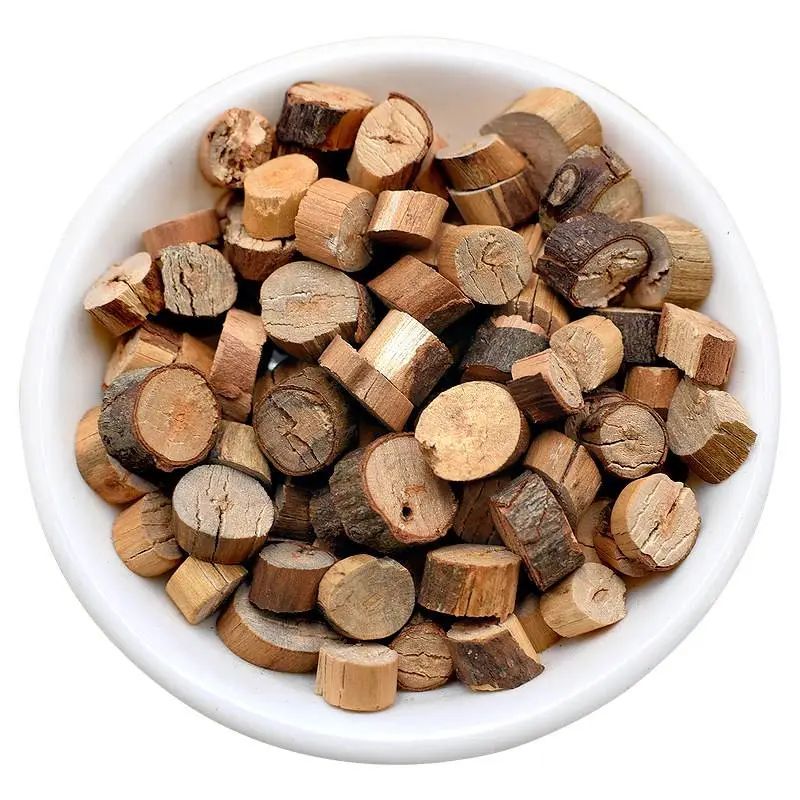 ▲Gui Zhi● Observing Spasm for Deficiency or ExcessZhou Zhongying believes that observing spasm for deficiency or excess is crucial; excess refers to heat excess causing wind, while deficiency refers to Yin injury leading to internal wind. In addition to external wind-cold, spasms due to epidemic diseases are more common. Warm pathogens causing spasms can also be classified into deficiency and excess. The so-called excess is often due to excessive heat pathogens, with heart fire, lung fire, or stomach fire provoking liver wind, or liver fire generating wind. The so-called fire nature is rapid; spasms of excess syndrome often occur suddenly, usually in the mid to late stages of the disease, presenting with neck stiffness, clenched jaws, opisthotonos, and frequent, forceful convulsions, which can be characterized as an excess manifestation. The treatment should focus on clearing the liver and draining fire, calming wind, and stopping spasms, with the representative formula being Ling Jiao Gou Teng Tang; if the pathogenic heat has been lingering for a long time, leading to true Yin deficiency, it often presents as tremors or twitching of the limbs, occurring intermittently, with fatigue and weak pulse, requiring nourishing Yin and softening the liver, with the representative formula being Da Ding Feng Zhu.● Classifying Reversal as Cold or HeatReversal should be classified as cold or heat, which is also an area that can easily be confused during differentiation and treatment. Cold reversal is due to the exhaustion of Qi and Yin, with Qi collapse and Yang loss, clinically presenting as pale complexion, fatigue, weak Qi, cold limbs, pale tongue, and weak pulse, representing a deficiency manifestation. The representative formulas can be selected based on the predominance of Qi deficiency or Yang deficiency, such as Sheng Mai Yin, Shen Fu Decoction, and Si Ni Decoction. Heat toxin penetrating inward, obstructing Yang Qi, preventing it from reaching the extremities, leads to deep heat and deep reversal. From the perspective of disease progression, heat reversal is a sign of closure, while cold reversal is a sign of collapse.● Closure as Phlegm and StasisAs previously mentioned, closure syndrome is often an excess syndrome. The pathogenesis involves the interplay of heat, phlegm, and stasis. Phlegm and stasis often arise from heat consuming fluids, transforming into phlegm, or heat pathogens injuring Ying and blood, scorching blood vessels, leading to stasis, with heat, phlegm, and stasis obscuring the heart spirit, resulting in closure syndrome. Zhou Zhongying refines the nature of fire as “rapid in nature.” The treatment method involves clearing heat, resolving phlegm, transforming stasis, and opening the orifices. Specifically, if heat is heavy and obstructing the orifices, one can choose formulas that clear heat and open the orifices, such as An Gong Niu Huang Wan; if phlegm is causing confusion and delirium, one can choose formulas that resolve phlegm and open the orifices, such as Zhi Bao Dan; if there is vexation and heat causing delirium, one can use Zi Xue Dan; if there is severe toxicity, Shen Xi Dan can be used; if stasis is evident, one can add blood-cooling and stasis-resolving herbs to the above formulas, using Qing Ying Tang or Xi Jiao Di Huang Tang as appropriate.Additionally, although closure syndrome is often a heat syndrome, there are also cold closure syndromes that should not be overlooked. The pathogenesis can be due to cold pathogens penetrating directly, leading to stupor without fever symptoms, thus representing a special type of externally contracted febrile disease, treated with aromatic opening orifices, moving Qi, and resolving phlegm, using Su He Xiang Wan.
▲Gui Zhi● Observing Spasm for Deficiency or ExcessZhou Zhongying believes that observing spasm for deficiency or excess is crucial; excess refers to heat excess causing wind, while deficiency refers to Yin injury leading to internal wind. In addition to external wind-cold, spasms due to epidemic diseases are more common. Warm pathogens causing spasms can also be classified into deficiency and excess. The so-called excess is often due to excessive heat pathogens, with heart fire, lung fire, or stomach fire provoking liver wind, or liver fire generating wind. The so-called fire nature is rapid; spasms of excess syndrome often occur suddenly, usually in the mid to late stages of the disease, presenting with neck stiffness, clenched jaws, opisthotonos, and frequent, forceful convulsions, which can be characterized as an excess manifestation. The treatment should focus on clearing the liver and draining fire, calming wind, and stopping spasms, with the representative formula being Ling Jiao Gou Teng Tang; if the pathogenic heat has been lingering for a long time, leading to true Yin deficiency, it often presents as tremors or twitching of the limbs, occurring intermittently, with fatigue and weak pulse, requiring nourishing Yin and softening the liver, with the representative formula being Da Ding Feng Zhu.● Classifying Reversal as Cold or HeatReversal should be classified as cold or heat, which is also an area that can easily be confused during differentiation and treatment. Cold reversal is due to the exhaustion of Qi and Yin, with Qi collapse and Yang loss, clinically presenting as pale complexion, fatigue, weak Qi, cold limbs, pale tongue, and weak pulse, representing a deficiency manifestation. The representative formulas can be selected based on the predominance of Qi deficiency or Yang deficiency, such as Sheng Mai Yin, Shen Fu Decoction, and Si Ni Decoction. Heat toxin penetrating inward, obstructing Yang Qi, preventing it from reaching the extremities, leads to deep heat and deep reversal. From the perspective of disease progression, heat reversal is a sign of closure, while cold reversal is a sign of collapse.● Closure as Phlegm and StasisAs previously mentioned, closure syndrome is often an excess syndrome. The pathogenesis involves the interplay of heat, phlegm, and stasis. Phlegm and stasis often arise from heat consuming fluids, transforming into phlegm, or heat pathogens injuring Ying and blood, scorching blood vessels, leading to stasis, with heat, phlegm, and stasis obscuring the heart spirit, resulting in closure syndrome. Zhou Zhongying refines the nature of fire as “rapid in nature.” The treatment method involves clearing heat, resolving phlegm, transforming stasis, and opening the orifices. Specifically, if heat is heavy and obstructing the orifices, one can choose formulas that clear heat and open the orifices, such as An Gong Niu Huang Wan; if phlegm is causing confusion and delirium, one can choose formulas that resolve phlegm and open the orifices, such as Zhi Bao Dan; if there is vexation and heat causing delirium, one can use Zi Xue Dan; if there is severe toxicity, Shen Xi Dan can be used; if stasis is evident, one can add blood-cooling and stasis-resolving herbs to the above formulas, using Qing Ying Tang or Xi Jiao Di Huang Tang as appropriate.Additionally, although closure syndrome is often a heat syndrome, there are also cold closure syndromes that should not be overlooked. The pathogenesis can be due to cold pathogens penetrating directly, leading to stupor without fever symptoms, thus representing a special type of externally contracted febrile disease, treated with aromatic opening orifices, moving Qi, and resolving phlegm, using Su He Xiang Wan.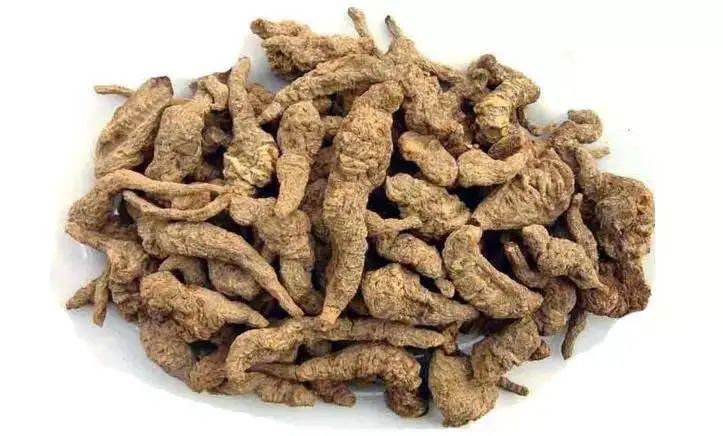 ▲Di Huang● Collapse as Qi and Yin ExhaustionCollapse primarily refers to Yang collapse and Yin collapse. Both Yang collapse and Yin collapse are critical conditions, often arising from high fever, spasms, reversal, and closure. Yin loss is often due to high fever, excessive sweating, vomiting, diarrhea, blood loss, or prolonged illness damaging Yin blood. Yang loss can occur due to Yin exhaustion with no Yang to support it or due to excessive pathogenic Qi suddenly injuring Yang Qi. Therefore, the treatment for collapse syndrome is to tonify Qi and nourish Yin, and to consolidate and contain. Formulas such as Sheng Mai Yin, Gui Zhi Jia Long Gu Mu Li Decoction, Shen Fu Decoction, Si Ni Decoction, and Si Ni Hui Yang San can be selected. If necessary, to save time, corresponding injectable medications such as Sheng Mai Injection or Shen Fu Injection can be chosen.For the five syndromes of heat, spasm, reversal, closure, and collapse, it is crucial to pay close attention to the timely diagnosis and treatment of high fever. If high fever cannot be promptly resolved, spasm, reversal, closure, and collapse are often inevitable, and these syndromes frequently occur together, leading to critical outcomes. Therefore, when treating externally contracted febrile diseases, it is essential not only to prevent problems before they arise but also to adopt timely and effective diagnostic and treatment methods once they occur to have a chance of recovery.Five Syndromes are Independent Yet Can CoexistFrom the perspective of the pathogenesis of the five major syndromes of externally contracted febrile diseases, each syndrome has a specific pathogenesis and can appear independently. In the early stages of the disease, fever is often the primary clinical manifestation. During the course of the disease, spasm, reversal, closure, and collapse can also appear independently; at this time, although the condition is severe, the pathogenesis is relatively clear and prominent, making differentiation and treatment more focused and specific.The five major syndromes of externally contracted febrile diseases are more often complex and intermingled. Fever is a common symptom of externally contracted febrile diseases, while spasm, reversal, closure, and collapse are variations, reflecting Zhou Zhongying’s understanding of the dynamic nature of disease. Wind movement causes spasms, often accompanied by confusion and coldness in the limbs. The onset can begin with spasm, followed by reversal, or reversal can occur after spasm, or both can appear simultaneously, hence they are often referred to together in clinical practice. Reversal is a cause of collapse, and collapse is a consequence of reversal; reversal syndrome often coexists with collapse syndrome, termed reversal-collapse. Profuse sweating is an essential symptom of collapse syndrome. Profuse sweating, whether due to Yin exhaustion or Yang collapse, can lead to Yang loss through sweating. If reversal syndrome persists, Qi and blood will not flow smoothly, leading to the heart being deprived of nourishment, resulting in collapse syndrome. Therefore, reversal is a lighter syndrome than collapse, while collapse is a consequence of reversal.
▲Di Huang● Collapse as Qi and Yin ExhaustionCollapse primarily refers to Yang collapse and Yin collapse. Both Yang collapse and Yin collapse are critical conditions, often arising from high fever, spasms, reversal, and closure. Yin loss is often due to high fever, excessive sweating, vomiting, diarrhea, blood loss, or prolonged illness damaging Yin blood. Yang loss can occur due to Yin exhaustion with no Yang to support it or due to excessive pathogenic Qi suddenly injuring Yang Qi. Therefore, the treatment for collapse syndrome is to tonify Qi and nourish Yin, and to consolidate and contain. Formulas such as Sheng Mai Yin, Gui Zhi Jia Long Gu Mu Li Decoction, Shen Fu Decoction, Si Ni Decoction, and Si Ni Hui Yang San can be selected. If necessary, to save time, corresponding injectable medications such as Sheng Mai Injection or Shen Fu Injection can be chosen.For the five syndromes of heat, spasm, reversal, closure, and collapse, it is crucial to pay close attention to the timely diagnosis and treatment of high fever. If high fever cannot be promptly resolved, spasm, reversal, closure, and collapse are often inevitable, and these syndromes frequently occur together, leading to critical outcomes. Therefore, when treating externally contracted febrile diseases, it is essential not only to prevent problems before they arise but also to adopt timely and effective diagnostic and treatment methods once they occur to have a chance of recovery.Five Syndromes are Independent Yet Can CoexistFrom the perspective of the pathogenesis of the five major syndromes of externally contracted febrile diseases, each syndrome has a specific pathogenesis and can appear independently. In the early stages of the disease, fever is often the primary clinical manifestation. During the course of the disease, spasm, reversal, closure, and collapse can also appear independently; at this time, although the condition is severe, the pathogenesis is relatively clear and prominent, making differentiation and treatment more focused and specific.The five major syndromes of externally contracted febrile diseases are more often complex and intermingled. Fever is a common symptom of externally contracted febrile diseases, while spasm, reversal, closure, and collapse are variations, reflecting Zhou Zhongying’s understanding of the dynamic nature of disease. Wind movement causes spasms, often accompanied by confusion and coldness in the limbs. The onset can begin with spasm, followed by reversal, or reversal can occur after spasm, or both can appear simultaneously, hence they are often referred to together in clinical practice. Reversal is a cause of collapse, and collapse is a consequence of reversal; reversal syndrome often coexists with collapse syndrome, termed reversal-collapse. Profuse sweating is an essential symptom of collapse syndrome. Profuse sweating, whether due to Yin exhaustion or Yang collapse, can lead to Yang loss through sweating. If reversal syndrome persists, Qi and blood will not flow smoothly, leading to the heart being deprived of nourishment, resulting in collapse syndrome. Therefore, reversal is a lighter syndrome than collapse, while collapse is a consequence of reversal.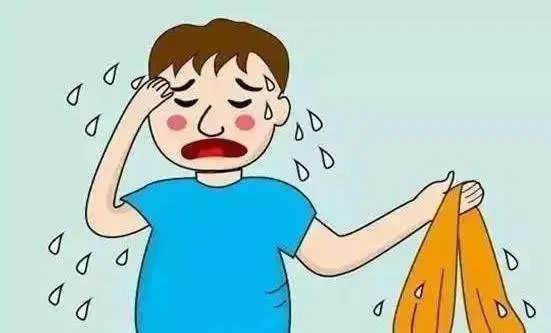 Among the five syndromes, spasm, reversal, closure, and collapse all involve disturbances of consciousness, but the pathogenesis differs. Specifically, spasm syndrome is due to liver fire disturbing the heart, leading to a loss of control of the spirit; reversal syndrome is due to Qi and blood not flowing smoothly, with Qi stagnation and stasis preventing the heart spirit from reaching the extremities, hence it is termed a loss of control of the spirit; closure syndrome is due to heat, phlegm, and stasis obscuring the heart orifices, obstructing the heart, hence it is termed a loss of function of the spirit; collapse syndrome is due to Qi and Yin exhaustion, leading to the heart spirit being deprived of nourishment, hence it is termed a loss of nourishment of the spirit. Since all four involve dysfunction of the heart spirit, they can coexist and intermix. For example, during the progression of the disease, heat, phlegm, and stasis can obscure the heart orifices, while the Qi and blood circulation is obstructed, leading to a combination of loss of function and loss of control of the spirit in closure and reversal syndromes. If multiple syndromes coexist, it can lead to the extreme critical condition of simultaneous occurrence of heat, spasm, reversal, closure, and collapse. In treatment, it is necessary to consider clearing heat, calming wind, opening orifices, tonifying, and smoothing Qi dynamics to achieve the desired therapeutic effect.Typical Medical CaseA patient, a university student, was hospitalized on August 26, 1998, due to fever, cough, and chest pain at a local hospital. The Western medical diagnosis was severe pneumonia and pleuritis. Various antibiotics and supportive therapies were administered, but the fever persisted, leading to respiratory distress. Chest X-ray showed right pneumothorax and bilateral pleural effusion. Blood cultures indicated growth of Staphylococcus aureus and fungi. On September 30, the patient developed toxic shock and multiple organ failure, prompting a consultation with Zhou Zhongying.Symptoms included high fever, confusion, spasms, and wheezing, indicating a critical condition. The TCM diagnosis was closure syndrome, differentiated as phlegm-heat obstructing the lungs, internal closure of the heart orifices, provoking liver wind, and injuring Yin and Qi, leading to internal closure and external collapse. The treatment aimed to support the righteous Qi and consolidate the collapse, clear and transform phlegm-heat, calm the liver and wind, and open the orifices to awaken the spirit, using multiple methods to achieve consolidation of the collapse, opening of the orifices, clearing of heat, calming of wind, and alleviation of wheezing. The medications used included An Gong Niu Huang Wan, Zi Xue Dan, Ling Yang Jiao Fen, and Hou Zao San.Second Diagnosis:The heat toxin remained strong, with signs of righteous Qi collapsing externally, necessitating an increase in clearing and penetrating power to expel pathogens and prevent collapse, adding herbs such as Jin Yin Hua, Lian Qiao, Dan Zhu Ye, and Qing Hao.Third Diagnosis:The trend of deterioration was curbed, and the righteous Qi was protected, leading to a turning point. Continued treatment focused on clearing, consolidating the collapse, opening the orifices, and calming the wind, with the critical condition alleviated, orifices gradually opening, and signs of collapse stabilized.Fourth Diagnosis:The heat toxin gradually subsided, body temperature normalized, consciousness cleared, and phlegm-heat, liver wind, and Qi and Yin damage became the main contradictions. Therefore, the original formula was adjusted to reduce the number of heat-clearing herbs and increase the focus on calming the liver, resolving phlegm-heat, and tonifying Qi and Yin.Note:This case is a review by Zhou Zhongying, and the specific content is not detailed, but the process and principles of treatment are established. The patient was a university student with a rapid onset of illness, quickly developing confusion and spasms, indicating a complex condition. There was both phlegm-heat and Qi obstruction affecting the heart, liver, and lungs, along with Qi and Yin damage. From the treatment perspective, the principle was to address the urgent symptoms first, consolidating the collapse and opening the closure, while also clearing heat, calming wind, and alleviating wheezing, with clear priorities and significant efficacy. Once the internal closure and external collapse were curbed, the treatment could adapt to the symptoms, focusing on calming the liver, resolving phlegm-heat, and tonifying Qi and Yin for follow-up care. Zhou Zhongying emphasized that the more urgent and critical the condition, the more it reflects the characteristics of TCM differentiation and treatment, although it does not exclude the role of Western medical methods, we must not underestimate our own advantages. This case illustrates this point.
Among the five syndromes, spasm, reversal, closure, and collapse all involve disturbances of consciousness, but the pathogenesis differs. Specifically, spasm syndrome is due to liver fire disturbing the heart, leading to a loss of control of the spirit; reversal syndrome is due to Qi and blood not flowing smoothly, with Qi stagnation and stasis preventing the heart spirit from reaching the extremities, hence it is termed a loss of control of the spirit; closure syndrome is due to heat, phlegm, and stasis obscuring the heart orifices, obstructing the heart, hence it is termed a loss of function of the spirit; collapse syndrome is due to Qi and Yin exhaustion, leading to the heart spirit being deprived of nourishment, hence it is termed a loss of nourishment of the spirit. Since all four involve dysfunction of the heart spirit, they can coexist and intermix. For example, during the progression of the disease, heat, phlegm, and stasis can obscure the heart orifices, while the Qi and blood circulation is obstructed, leading to a combination of loss of function and loss of control of the spirit in closure and reversal syndromes. If multiple syndromes coexist, it can lead to the extreme critical condition of simultaneous occurrence of heat, spasm, reversal, closure, and collapse. In treatment, it is necessary to consider clearing heat, calming wind, opening orifices, tonifying, and smoothing Qi dynamics to achieve the desired therapeutic effect.Typical Medical CaseA patient, a university student, was hospitalized on August 26, 1998, due to fever, cough, and chest pain at a local hospital. The Western medical diagnosis was severe pneumonia and pleuritis. Various antibiotics and supportive therapies were administered, but the fever persisted, leading to respiratory distress. Chest X-ray showed right pneumothorax and bilateral pleural effusion. Blood cultures indicated growth of Staphylococcus aureus and fungi. On September 30, the patient developed toxic shock and multiple organ failure, prompting a consultation with Zhou Zhongying.Symptoms included high fever, confusion, spasms, and wheezing, indicating a critical condition. The TCM diagnosis was closure syndrome, differentiated as phlegm-heat obstructing the lungs, internal closure of the heart orifices, provoking liver wind, and injuring Yin and Qi, leading to internal closure and external collapse. The treatment aimed to support the righteous Qi and consolidate the collapse, clear and transform phlegm-heat, calm the liver and wind, and open the orifices to awaken the spirit, using multiple methods to achieve consolidation of the collapse, opening of the orifices, clearing of heat, calming of wind, and alleviation of wheezing. The medications used included An Gong Niu Huang Wan, Zi Xue Dan, Ling Yang Jiao Fen, and Hou Zao San.Second Diagnosis:The heat toxin remained strong, with signs of righteous Qi collapsing externally, necessitating an increase in clearing and penetrating power to expel pathogens and prevent collapse, adding herbs such as Jin Yin Hua, Lian Qiao, Dan Zhu Ye, and Qing Hao.Third Diagnosis:The trend of deterioration was curbed, and the righteous Qi was protected, leading to a turning point. Continued treatment focused on clearing, consolidating the collapse, opening the orifices, and calming the wind, with the critical condition alleviated, orifices gradually opening, and signs of collapse stabilized.Fourth Diagnosis:The heat toxin gradually subsided, body temperature normalized, consciousness cleared, and phlegm-heat, liver wind, and Qi and Yin damage became the main contradictions. Therefore, the original formula was adjusted to reduce the number of heat-clearing herbs and increase the focus on calming the liver, resolving phlegm-heat, and tonifying Qi and Yin.Note:This case is a review by Zhou Zhongying, and the specific content is not detailed, but the process and principles of treatment are established. The patient was a university student with a rapid onset of illness, quickly developing confusion and spasms, indicating a complex condition. There was both phlegm-heat and Qi obstruction affecting the heart, liver, and lungs, along with Qi and Yin damage. From the treatment perspective, the principle was to address the urgent symptoms first, consolidating the collapse and opening the closure, while also clearing heat, calming wind, and alleviating wheezing, with clear priorities and significant efficacy. Once the internal closure and external collapse were curbed, the treatment could adapt to the symptoms, focusing on calming the liver, resolving phlegm-heat, and tonifying Qi and Yin for follow-up care. Zhou Zhongying emphasized that the more urgent and critical the condition, the more it reflects the characteristics of TCM differentiation and treatment, although it does not exclude the role of Western medical methods, we must not underestimate our own advantages. This case illustrates this point.
Important Disclaimer:
Due to individual differences in constitution and condition, the formulas and dosages in this case are only applicable to the specific patient’s condition at that time. Without TCM differentiation and diagnosis, do not replicate the prescriptions and dosages in this case. Readers in need should seek treatment at a legitimate hospital to avoid delaying their condition.
【Source: China Traditional Chinese Medicine News, content selected from “China Traditional Chinese Medicine News” March 11, 2022, Fifth Edition, Zhengzhou University People’s Hospital Zheng Zhipan, Nanjing University of Chinese Medicine First Clinical Medical College Ye Fang, Zhou Xueping】Recommended Reading





